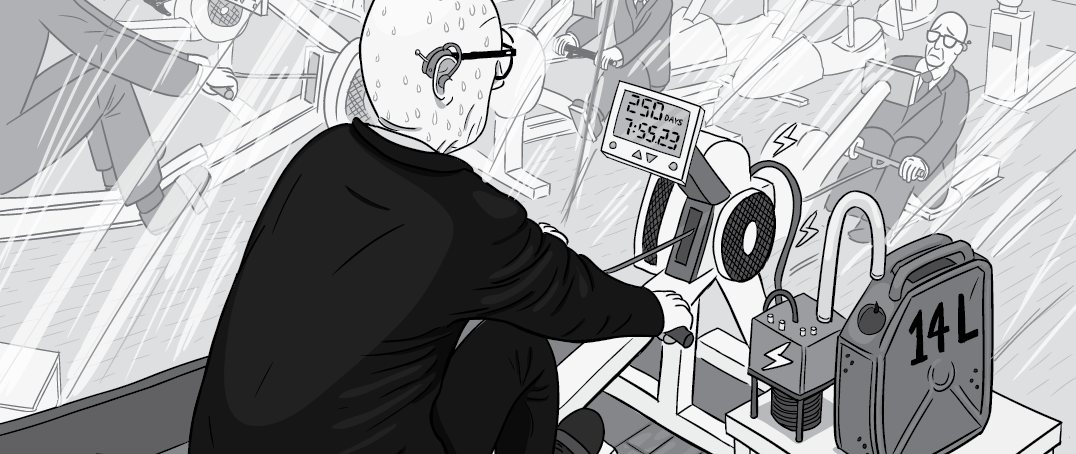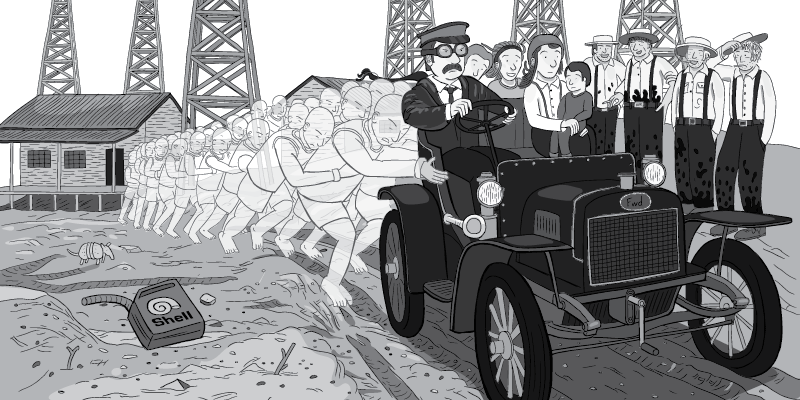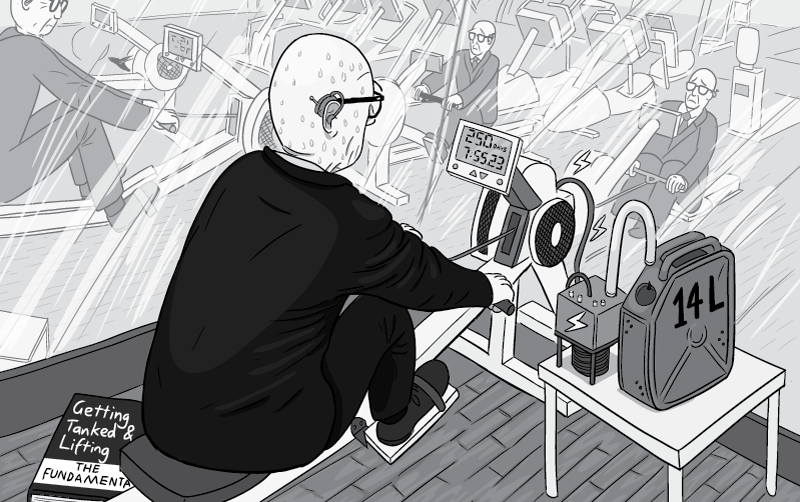The mind, but not the muscle: understanding Energy Slaves

This is essay 2 from a 7-part series expanding the ideas from my comic Energy Slaves, about Buckminster Fuller’s insights into human energy consumption.
Modern humans: the minds that control the energy slaves
Our ancestors were once both the mind and muscle that influenced their physical world. Today, we are essentially just the mind. Fossil fuels are the overwhelming muscle that we use to influence our world today.

I examine this idea from many different angles throughout my Energy Slaves comic. I ponder what this means for us as individuals, and as a broader society. I also ponder what this means for the future civilisation that we are heading towards.
Our puny bodies: outgunned by fossil fuels
For me, the stand-out statistic from my Energy Slaves comic is on Page 49.

I reveal that if an average human being was placed on a rowing machine (or exercise bike, or treadmill…) for a year of 250 eight-hour shifts, the total amount of energy that the person could expend into the machine would be 500 megajoules.
How much is 500 megajoules? It is roughly equivalent to the energy stored within 14 litres of gasoline (petrol).
14 litres of gasoline after an entire year of human effort!!?? Most motorists burn that volume in a week of car-driving. Many burn that amount every single day!

To be precise, the average American motorist burns close to 7 litres of gasoline each day. [source] So a whole year of human exercise would only allow an American to drive their car for just 2 or 3 days.
This statistic shows how puny our bodies are compared to the supernormal power of fossil fuels.
(It also puts pause to the often-suggested idea that fitness centres should install electrical generators on all of the treadmills, and exercise equipments within their gyms. As Energy Slaves shows, the amount of electricity that can be generated by human bodies is puny compared to fossil fuels. Technologies like Energy Floors, that rely on human bodies to generate energy, will only ever be a small-scale gimmick).
Driving cars: just the tip of the iceberg
This statistic becomes even more profound when you realise that the fuel that we burn in our cars from driving is just a fraction of the energy that our lifestyles require. Most of our lifestyle’s fossils fuels are not burnt by us locally through our actions. They are burnt beyond the horizon by someone else who is distantly working on our behalf. For example, by the farmer who drives a tractor to harvest your food, or by the glass factory who produces the bottles that your beer is served in.
Or by the truck driver who delivers these goods to your local shops.

With my comic, I wanted to help readers appreciate the sheer amount of physical work that is done on their behalf by external sources of energy. It is so easy for us to take these invisible tasks for granted, forgetting that they are essential to us being able to continue our modern lifestyles.
In my next essay, I discuss the way that our civilisation got to this point, gradually building up its’ army of ‘energy slave’ workers with time.
Read the rest of my a 7-part series of essays about my comic Energy Slaves. If you like my work, please become my crowdfunding patron via crowdfundstu.com












Comments